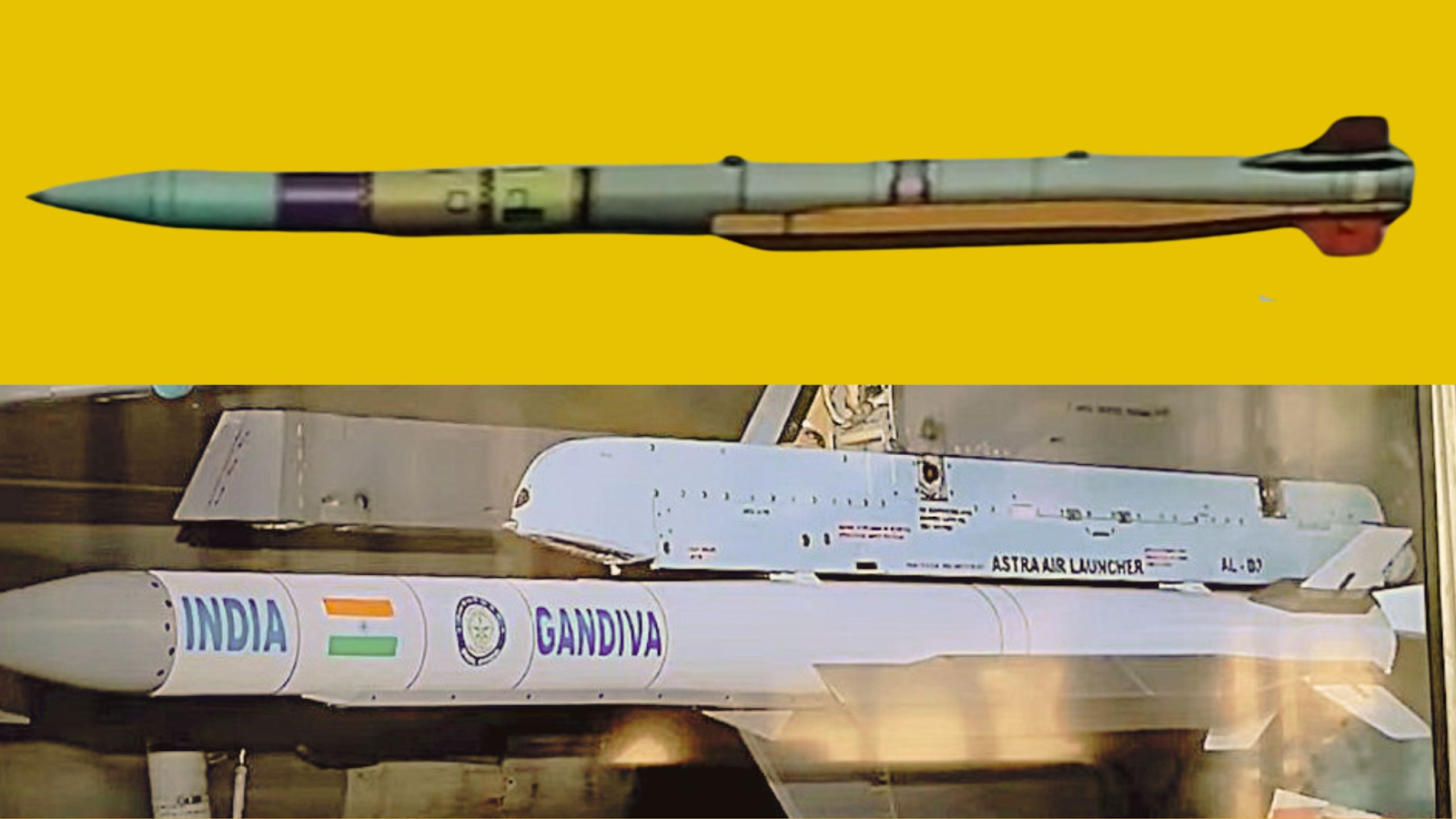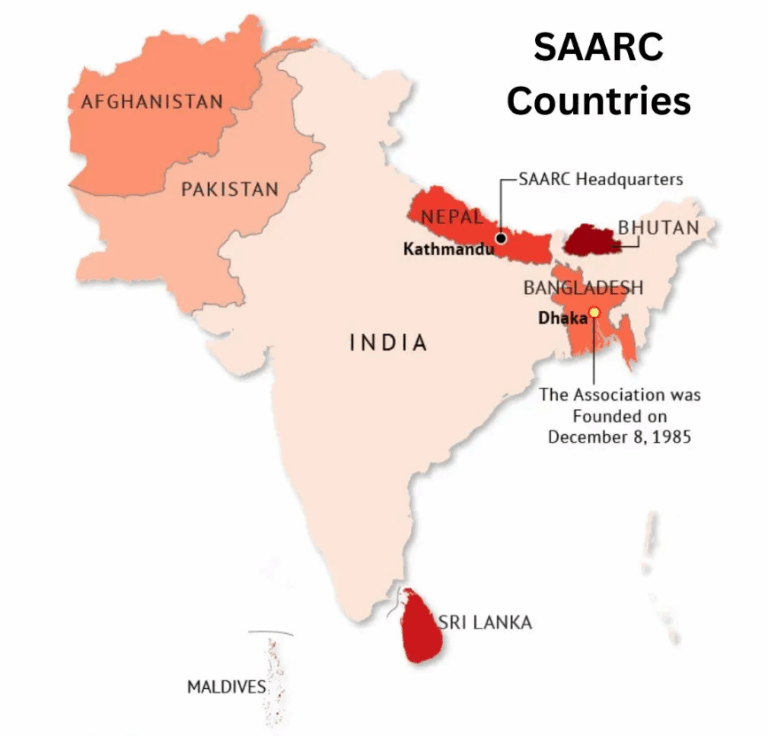OPERATION SINDOOR: From HAMMER to BrahMos, The Precision-Guided Long-Range Weapons in the Indian military’s Arsenal
Operation Sindoor
- India successfully conducted Operation Sindoor, a joint military operation involving the Army, Navy, and Air Force, targeting terrorist camps at nine locations in Pakistan and Pakistan-occupied Kashmir (Pok).

- The strikes were a response to the April 22 terrorist attack in Pahalgam, attributed to ISI-backed militant groups. Precision munitions were used to hit four targets in Pakistan (Bahawalpur, Muridke, Sialkot, Sarjal) and five in Pok, to dismantle terrorist infrastructure operating with impunity.
Operation Sindoor
- Redefining the Causal Link Between Pakistan and Terrorism
- India framed Operation Sindoor as a response not just to the recent Pahalgam attack, but to a two-decade-long pattern of Pakistan-sponsored terrorism since the 2001 Parliament attack.
- It highlighted the role of groups like Jaish-e-Mohammed (JeM) and Lashkar-e-Taiba (LeT), both UN-designated terrorist groups.
- Cited examples like Sajid Mir and the FATF’s role in forcing Pakistan to take symbolic actions without dismantling terror networks.
- Targeting key sites like Markaz Subhan Allah, Markaz Taiba, and Mehmoona Joya undermines Pakistan’s narrative that newer proxy groups (like TRF) are disconnected from Islamabad.
- Targeting Terror, Not the Pakistani Military
- India continues its doctrine of hitting terrorist infrastructure without targeting Pakistan’s conventional military.
- The strikes were labeled as “non-military” and “preemptive”, similar to the approach in the 2016 surgical strikes and 2019 Balakot airstrike.
- However, Sindoor marks an escalation in depth and scale, striking targets deep within Pakistan, not just in PoK.
Calibrated Action with Strategic Restraint
- India emphasized Sindoor was “focused, measured, and non-escalatory”, showing it does not seek full-scale war.
- However, it sent a clear message that Pakistan’s nuclear deterrence posture no longer shields its terror infrastructure.
- Future escalations by Pakistan could trigger Indian retaliation on military assets, pushing the threshold higher.
What Makes Operation Sindoor Different
- Unprecedented Scale and Reach
- Nine locations targeted across Pakistan and Pakistan-occupied Kashmir (Pok), including Muzaffarabad, Bahawalpur, Rawalakot, Jhelum, and more.

- 24 missile strikes launched in a single day – India’s largest single-day strike so far.
- Over 70 militants were killed and 60 were injured, sending a powerful deterrent message.
- Unlike Balakot (2019) and Uri (2016), which targeted one or a few sites, Sindoor reflects a massive, coordinated offensive.
Wider Target Spectrum and Deep Strikes
- India signalled that no part of Pakistan is off-limits, targeting deep inside the Pakistani heartland.
- Shows a clear shift in policy from reactive to pre-emptive and assertive.
- Military analysts noted this operation crossed previous thresholds in terms of both geography and intensity.
Tri-Services Coordination and Advanced Weaponry
- Indian Army, Navy, and Air Force all took part, demonstrating joint operational strength.
- Strikes were highly coordinated, time-bound, and used real-time UAV confirmation to verify destruction, marking a new benchmark in precision warfare.
Strategic Red Line Shift
- India refrained from hitting Pakistani military installations to avoid conventional escalation, but the depth and scale of the strikes altered the red line.
- The operation has redefined the costs Pakistan may have to bear for continuing cross-border terrorism.
- India hits with Nari Shakti, Human-Centric Messaging Named “Sindoor” to honour the victims of the Pahalgam attack, particularly widows of the 26 slain.

- India carried out Operation Sindoor, targeting 21 terror camps across nine locations in Pakistan and Pakistan-occupied Kashmir (Pok) in response to a recent terrorist attack in Pahalgam.
- The Indian Armed Forces used precision strikes with niche-technology weapons and carefully chosen warheads to minimise collateral damage.
- Although specific weapons were not disclosed, the military’s arsenal now includes advanced precision-guided long-range weapons and drones, such as loitering munitions.
Precision Guided Munitions (PGMs)
PGMS, also called smart weapons or smart bombs, are missiles or bombs designed to accurately strike specific targets while minimising collateral damage.
Features of PGMs
- Advanced Guidance Systems: PGMs use GPS, laser guidance, infrared sensors, or radar to track and hit targets precisely.
- Mid-Flight Course Corrections: They can adjust their trajectory mid-air to account for weather, wind, or targeting errors.
- Reduced Collateral Damage: By targeting with precision, PGMs limit harm to civilians and nearby infrastructure.
- Increased Accuracy: They offer greater accuracy than unguided munitions, with a much smaller margin of error.
- Versatile Deployment: PGMs can be launched from aircraft, ships, ground platforms, or UAVs, enhancing their operational flexibility.
Cutting-Edge Precision Weapons in India’s Military Arsenal
- Two weeks after Pakistani terrorists killed 26 civilians in Pahalgam, India launched Operation Sindoor, conducting airstrikes on nine locations in Pakistan and PoK targeting terrorist infrastructure.

- The Indian Air Force (IAF) deployed Rafale jets, which used SCALP missiles for deep strikes and HAMMER missiles for medium-range precision targets.
HAMMER
- Highly Agile and Manoeuvrable Munition Extended Range (HAMMER) air-to-ground precision-guided weapon system for the Rafale fighter aircraft has a range of up to 70 km and can also be fitted to bombs and various guided systems.
- Built by the French aerospace, defence, and security corporation Safran, the HAMMER weapon system is highly versatile and can be used for precision strikes against a range of targets in medium-range tactical operations.
- According to the Safran Group, the system is autonomous and insensitive to jamming and can be launched from a low altitude over rough terrain.
SCALP
- SCALP-EG (Système de Croisière Autonome à Longue Portée — Emploi Général), also known as Storm Shadow in the UK, is an air-launched cruise missile designed for long-range deep strike missions with stealth features.
Manufacturer and Range
- Developed by MBDA, a European multinational defence company, SCALP has a range of around 450 km and is capable of low-altitude flight, making it hard to detect.
Perational Versatility
- It can be deployed at night and in all weather conditions, providing the Indian Air Force with high operational flexibility.
Advanced Navigation and Targeting
- SCALP uses a combination of INS, GPS, and terrain referencing for navigation, allowing it to penetrate heavily fortified targets like bunkers and ammunition depots with high precision.
BRAHMOS: India’s Supersonic Cruise Power
- These supersonic cruise missiles, which have been operationalised in all three defence services, are built by BrahMos Aerospace, a joint venture between India’s Defence Research and Development Organisation (DRDO) and Russia’s NPO Mashinostroyeniya.

- BrahMos missiles operate at close to Mach 3 speed in the cruise phase, which ensures reduced flight time, lower dispersion of targets, and quicker engagement time and non-interception.
- The missile operates on a ‘Fire and Forget Principle’, adopting various flight paths on its way to the target. As per its website, cruising altitude could be up to 15 km and terminal altitude as low as 10 metres. The missile carries a conventional warhead weighing 200-300 kg
METEOR: Next-Gen Air-to-Air Superiority
- The Meteor is a Beyond Visual Range Air-to-Air Missile (BVRAAM) developed by MBDA, effective even in dense electronic warfare environments.

Loitering Munition
- A notable aspect of Operation Sindoor was the deployment of loitering munitions, also known as ‘suicide drones.’
- These unmanned aerial vehicles are designed to hover over a target area, identify threats, and engage them precisely.

- Unlike traditional missiles, loitering munitions can wait for the optimal moment to strike, reducing the risk of collateral damage. Once they lock onto a target, they crash into it and explode.
- These weapons are often called suicide drones, kamikaze drones, or exploding drones.
PRELIMS PRACTICE QUESTION:
Question: Regarding the precision-guided weapon systems used or potentially deployed during Operation Sindoor, consider the following statements:
- The HAMMER missile, launched from Rafale jets, is incapable of autonomous operation and requires continuous guidance from the launching aircraft.
- SCALP missiles are designed for short-range tactical strikes and are ineffective in adverse weather conditions or nighttime operations.
- The BrahMos missile follows a fixed trajectory after launch and cannot adapt its flight path to avoid interception.
- Loitering munitions provide real-time target engagement flexibility, making them distinct from traditional cruise missiles.
Which of the statements given above is/are correct?
A. 1 and 3 only
B. 2 and 4 only
C. 4 only
D. 1, 2, and 3 only
Answer: C. 4 only
Explanation:
- Statement 1 is incorrect: HAMMER is autonomous and insensitive to jamming.
- Statement 2 is incorrect: SCALP is a long-range missile effective in all weather and night operations.
- Statement 3 is incorrect: BrahMos follows variable flight paths and uses a fire-and-forget system.
- Statement 4 is correct: Loitering munitions can hover and strike at the optimal time, unlike conventional missiles.
MAINS PRACTICE QUESTION
Q. Critically evaluate how Operation Sindoor reflects a doctrinal shift in India’s military strategy through the integration of advanced precision-guided munitions, and analyse its implications for regional power balance, strategic stability, and international norms on the use of force. (10 marks, 150 words).







